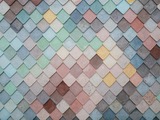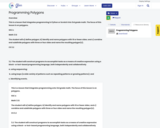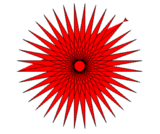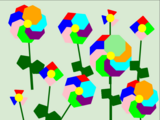
Investigating Polygons - Mathematics Instructional Plan
- Subject:
- Mathematics
- Material Type:
- Lesson Plan
- Provider:
- VDOE
- Author:
- VDOE
- Date Added:
- 10/07/2024

Investigating Polygons - Mathematics Instructional Plan

Combine Polygons to Create and Name New Polygon - Rich Mathematical Task Template and Student Version

Combining Polygons - Mathematical Instructional Plan

Subdividing Polygons - Mathematics Instructional Plan

Combining and Subdividing Polygons

This performance task is designed for third grade students and higher to compare and contrast a group of items based on attributes or actions classified into at least two sets and subsets. The items being classified are polygons. The use of algorithms and flowcharts is also a key component of the performance task.

Drawing representations of points, line segments, rays, angles, and lines --Mathematics Instructional Plans (MIPs) help teachers align instruction with the Mathematics Standards of Learning (SOL) by providing examples of how the knowledge, skills and processes found in the SOL and curriculum framework can be presented to students in the classroom.

Standard of Learning (SOL) 3.12a
The student will define polygon.

Standard of Learning (SOL) 3.12b
The student will identify and name polygons with 10 or fewer sides.

Standard of Learning (SOL) 3.12c
The student will combine and subdivide polygons with three or four sides and name the resulting polygon(s).

Students will find helpful resources for learning and practicing math skills and processes in this eMediaVA collection.

This resource can be found in Illustrative Mathematics website. There are a few modifications that were necessary to support the original lesson. Suggested modifications: Instead of providing with an activity, I strongly suggest activating student's background knowledge with a book on "The Greedy Triangle" by Marilyn Burns which encourages literacy in the curriculum. Students often are motivated to write a children's book or a poem, as it allows them to think outside the box. Secondly, the suggested activities will allow students to explore and have a mathematical dialogue about different polygons, and discourage rote memorization of geometric shapes.

Investigating polygons -- Mathematics Instructional Plans (MIPs) help teachers align instruction with the Mathematics Standards of Learning (SOL) by providing examples of how the knowledge, skills and processes found in the SOL and curriculum framework can be presented to students in the classroom.

This is a lesson that integrates programming in Python or Scratch into 3rd grade math. The focus of this lesson is on polygons.SOL's:Math 3.12The student will a) define polygon; b) identify and name polygons with 10 or fewer sides; and c) combine and subdivide polygons with three or four sides and name the resulting polygon(s).CS 3.2 3.2 The student will construct programs to accomplish tasks as a means of creative expression using a block- or text-based programming language, both independently and collaboratively a. using sequencing; b. using loops (a wide variety of patterns such as repeating patterns or growing patterns); and c. identifying events.

This is a lesson that integrates programming in Python or Scratch into 3rd grade math. The focus of this lesson is on polygons.SOL's:Math 3.12The student will a) define polygon; b) identify and name polygons with 10 or fewer sides; and c) combine and subdivide polygons with three or four sides and name the resulting polygon(s).CS 3.2 3.2 The student will construct programs to accomplish tasks as a means of creative expression using a block- or text-based programming language, both independently and collaboratively a. using sequencing; b. using loops (a wide variety of patterns such as repeating patterns or growing patterns); and c. identifying events.

A lesson plan with answer key for incorporating programming with Python and fifth grade geometry SOL's.

The purpose of this lesson would be to review polygons and explore the turtle module of Python. Students would see firsthand what turtle can create and then have time to try and write their own program.

Students will create flowers using polygons with 3-10 sides, classify and arrange them, based on different attributes (SOL CS 4.5). This activity would be done with 4th graders, but it could be modified for 3rd or 5th grades. The students would work both individually and collaboratively.